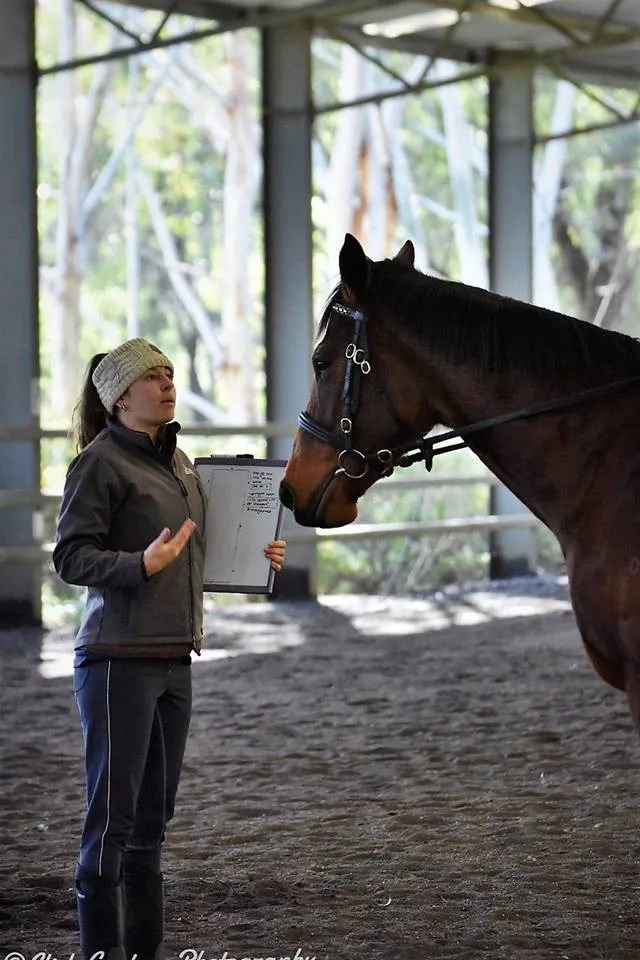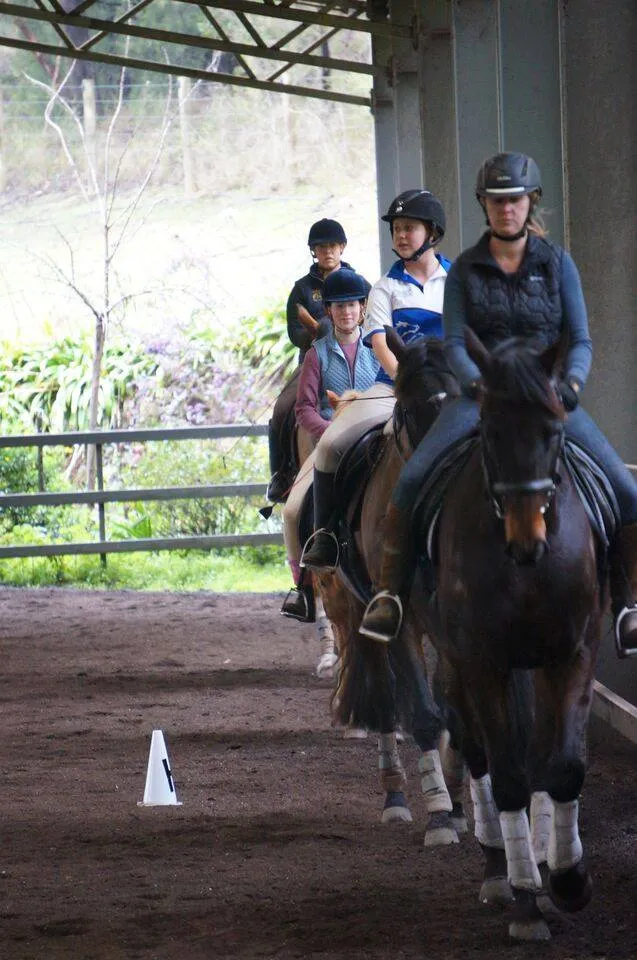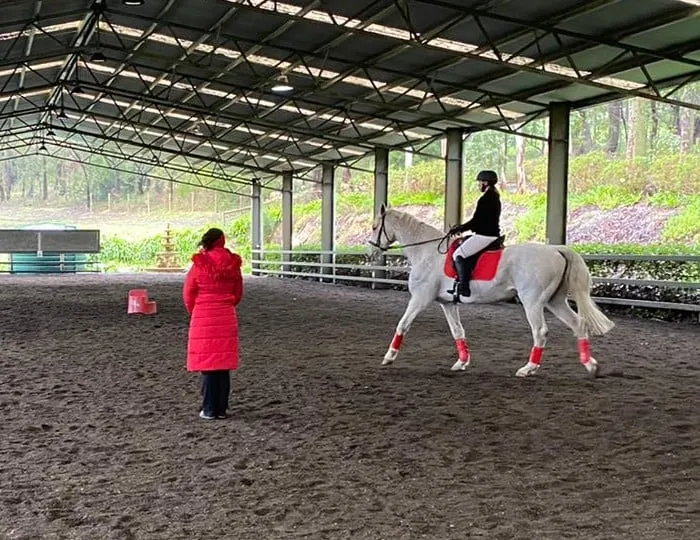Our Introductory Coaching Course which is base around the Equestrian Australia curriculum, is the final stage to become an EA Introductory Coach. This course delivers the knowledge necessary to all potential coaches to start and execute the assessment process.
Our online course covers
all the necessary practical information to present a lesson acceptable for the assessment process.
Optional practical sessions are available on the first Sunday of March, June, and September. These sessions provide hands-on coaching experience, and participants are required to book in advance to secure a spot.
For those interested in taking the Equestrian Australia (EA) coaching assessments, it is necessary to purchase a manual and schedule an assessment.
Assessments can be completed during the optional practical sessions or independently through an EA Coach Educator Australia wide. (Perfect for interstate participants)
Bookings are essential.
Q&A webinars are offered on the first Tuesday of every month, giving participants the opportunity to ask questions and gain further insights into the course material.
While the course includes 10 hours of video content, an additional 20 hours of study time is recommended for those preparing for the assessments. This suggested study time may vary depending on individual needs.
There is no age restriction to enroll in the course; however, participants must be 18 years old to take part in the EA Coaching Assessments.
Limited Time Special Deal $1,650 $295
LIFETIME ACCESS
82% Less than Regular Price
OR
Buy All 3 Introductory Courses:
**Introductory Horse Management
**Introductory Horse Riding
**Introductory Coaching
Bundle Deal - $3,300 $790


This course covers the theory component of the Equestrian Australia Introductory Coaching Course.
This is an internationally recognized qualification. To move forward, a manual is required to be purchased from Equestrian Australia national office by following this link.
Once you have completed the theory component of the Introductory Coaching Course, your practical skills will need to be found competent. We provide face-to-face practical sessions throughout each year for anyone wanting to get 'hand-on' experience to test their coaching skills before undergoing the riding assessment. Click HERE to view upcoming dates.
To fulfill the Ea Introductory Coaching qualification, an assessment by an EA qualified educator is required. Please follow this link to a list of coach educators. We can also provide assessments for candidates.
Ensuring area suitability is crucial for athlete safety and performance, as it prevents accidents and optimizes training. Compliance with Equestrian Australia (EA) and industry standards minimizes risks and promotes professionalism. Identifying safety threats and conducting regular gear checks protect athletes and staff, while coaches enforce safety standards to maintain a secure environment. Effective accident reporting and understanding duty of care, negligence, and liability are essential for improving safety measures and preventing legal issues. Adhering to legal responsibilities ensures compliance with regulations, safeguarding the organization and participants.
Suitability of an area
Complying with EA and industry standards
Common safety threats
The coach and safety standards
Gear Check
Accident reporting procedures
Duty of care, negligence and liability
Legal responsibilities

An equestrian coach is essential for guiding athletes, ensuring safety, and fostering growth. Differentiating between coaching and teaching allows for setting effective goals, with a focus on overall performance versus specific skills. Clear communication and conflict management are key to a positive training environment. Tailored lessons for beginners build a strong foundation, while structured lesson plans ensure consistent progress. Regular assessment of the horse and participant allows for necessary adjustments, maximising performance and safety. Careful lesson planning and execution ensure that training objectives are efficiently achieved.
Functions of the equestrian coach
Coaching v teaching and effective goals
Effective communication
Conflict management
Beginner participant performance
Creating lesson plans
Assessing horse and participant
Planning and conducting lessons

Proper ride organization is crucial for ensuring safe, efficient, and productive lessons, allowing participants to focus on improving their skills. Lessons on the flat lay the foundation for equestrian training, emphasising balance, control, and communication between rider and horse, which are essential for mastering advanced techniques. Developing an upright seat and understanding the use of aids and paces are key to effective riding, as they enhance balance, stability, and clear communication with the horse. Learning tracks, figures, and school movements improves precision, control, and coordination, fostering greater harmony between horse and rider. Additionally, lungeing the participant is a valuable technique for building a rider’s balance, confidence, and independent seat, enabling focused and effective learning.
Ride organisation
Lessons on the flat
Upright seat, aids and paces
Tracks, figures and school movements
Lungeing the participant


About your Trainer
My name is Leanne Williams and I am here to help YOU with all my 35 years of Coaching and Coach Educating experience.
I always wanted to teach and in 1991 I started that journey. I believed that the Equestrian Australia path was the direction that was going to give me the most depth of knowledge and education.
I achieved my Level 1 General in 1995. Then progressed onto my Level 2 Dressage Specialist receiving that in 2002. I finally completed the Equestrian Australia Coaching journey and gained my Level 3 Dressage Specialist qualifications in 2014.
19 years from start to finish!
During this time I really came to understand the importance of correct training to become a teacher. I so wanted to share my experiences so I became a SSTA (Sports Specific Trainer Assessor) and then followed that up by becoming an Equestrian Australia Coach Educator. I recieved that in 2016.
Since then I have aided so many aspiring coaches gain their qualifications and have so loved the their success in the process we've created.
It's been an amazing journey right from the beginning and I want share all of that with YOU!
I just can’t wait to help you begin your Coaching journey too!!! 😊